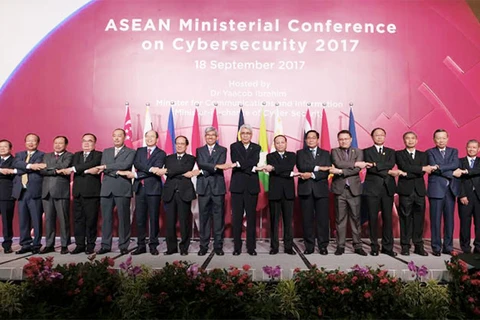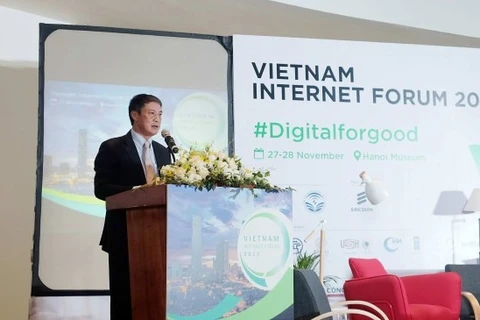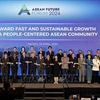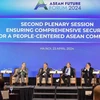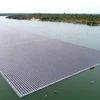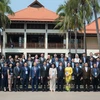Singapore (VNA) – Singapore, as the rotary chairman of the Association of Southeast Asian Nations (ASEAN), plans to speed up ASEAN’s economic recovery from advanced technologies to innovate and make the region more competitive.
Tony Cripps, Chief Executive Officer of the HSBC Singapore, said that the plan aims to create an environment that facilitates freer trade and regional interdependence as well as establishes a network of smart cities.
This will power the region’s digital economy, improve trade circulation, and encourage investment which result in a rapid development of digital consumption market and its related services.
Southeast Asia is the world’s fastest growing Internet region. Nearly four million new users will go online every month in the next five years. According to a Google/Temasek study, total internet users in the region will reach 480 million by 2020 and there are over 700 million mobile internet subscribers in the region.
However, these consumers only spend 30 billion USD on online shopping. Spending can rise six and a half times or 500 percent to 200 billion USD by 2025, buoyed by the consumption of electronics, clothing, household goods and groceries and travel within the region.
The HSBC CEO believed that ASEAN economies stand to benefit from the potential of this flourishing digital economy.
Singaporean Foreign Minister Vivian Balakrishnan painted a vision of a single digital market that would have norms to guard “cybersecurity and yet enable cross-border transactions at very much lower transaction rates”. A single interoperable payment system presents a huge opportunity to enhance intra-regional trade and business activity. Once operational, an integrated ASEAN e-payment system would allow a Singaporean firm to pay its Indonesian supplier in rupiah by making a cross-border payment instantly.
Removing cost and logistic barriers to international payment is a significant move to unlock ASEAN’s growth potential. If standards such as ISO 20022 are adopted to support the network, the ASEAN Economic Committee will be globally connected, facilitating the flow of trade and foreign direct investment with the rest of the world.
Greater benefits will be attained if regional integration is paired with the application of new technologies like Industry 4.0 or similar.
Tony Cripps, Chief Executive Officer of the HSBC Singapore, said that the plan aims to create an environment that facilitates freer trade and regional interdependence as well as establishes a network of smart cities.
This will power the region’s digital economy, improve trade circulation, and encourage investment which result in a rapid development of digital consumption market and its related services.
Southeast Asia is the world’s fastest growing Internet region. Nearly four million new users will go online every month in the next five years. According to a Google/Temasek study, total internet users in the region will reach 480 million by 2020 and there are over 700 million mobile internet subscribers in the region.
However, these consumers only spend 30 billion USD on online shopping. Spending can rise six and a half times or 500 percent to 200 billion USD by 2025, buoyed by the consumption of electronics, clothing, household goods and groceries and travel within the region.
The HSBC CEO believed that ASEAN economies stand to benefit from the potential of this flourishing digital economy.
Singaporean Foreign Minister Vivian Balakrishnan painted a vision of a single digital market that would have norms to guard “cybersecurity and yet enable cross-border transactions at very much lower transaction rates”. A single interoperable payment system presents a huge opportunity to enhance intra-regional trade and business activity. Once operational, an integrated ASEAN e-payment system would allow a Singaporean firm to pay its Indonesian supplier in rupiah by making a cross-border payment instantly.
Removing cost and logistic barriers to international payment is a significant move to unlock ASEAN’s growth potential. If standards such as ISO 20022 are adopted to support the network, the ASEAN Economic Committee will be globally connected, facilitating the flow of trade and foreign direct investment with the rest of the world.
Greater benefits will be attained if regional integration is paired with the application of new technologies like Industry 4.0 or similar.
Singapore is recommending the development of a smart city network in the bloc. ASEAN should bolster ties with foreign partners, including China, the EU, India and Britain via economic cooperation agreement such as the Regional Comprehensive Economic Partnership (RCEP) and the Comprehensive and Progressive Agreement for Trans-Pacific Partnership (CPTPP).
ASEAN’s young population and middle class are driving the growth of the digital economy. Irrational investment to develop digital economy will make ASEAN loose its competitive edge. Developing smart cities, deepening foreign relations, digitalising trade process, and building integrated system will be given top priority to promote ASEAN’s agenda this year.-VNA
ASEAN’s young population and middle class are driving the growth of the digital economy. Irrational investment to develop digital economy will make ASEAN loose its competitive edge. Developing smart cities, deepening foreign relations, digitalising trade process, and building integrated system will be given top priority to promote ASEAN’s agenda this year.-VNA
VNA

